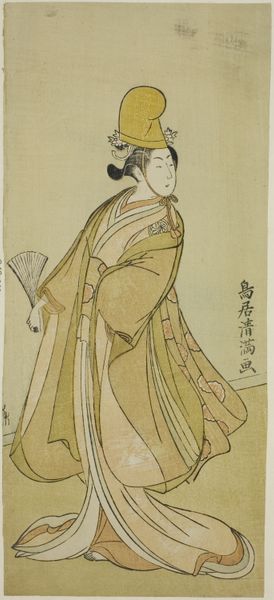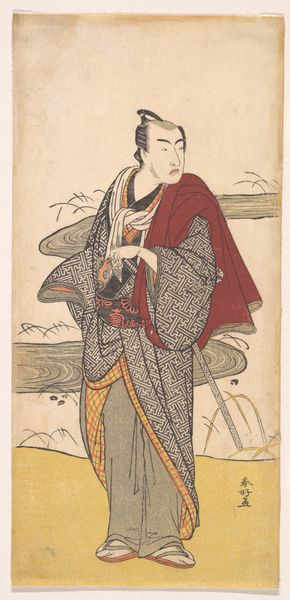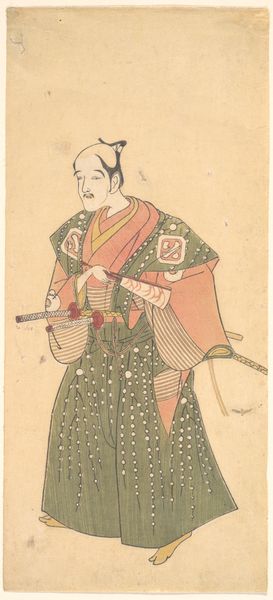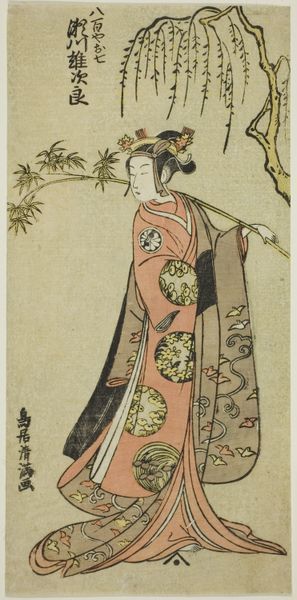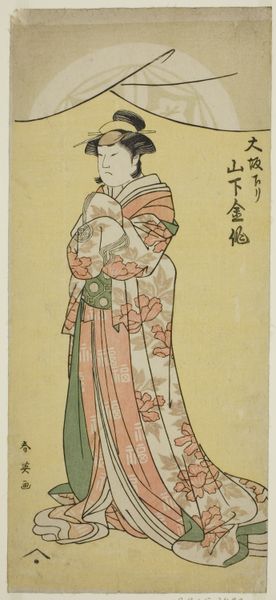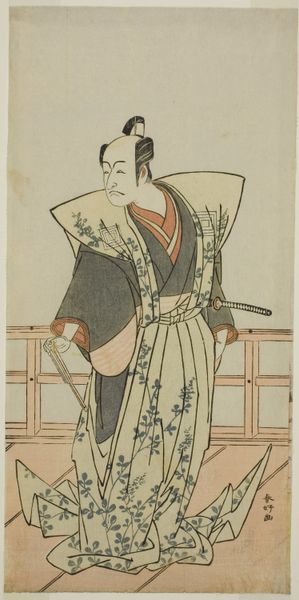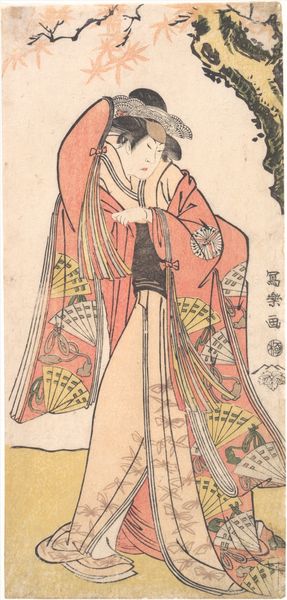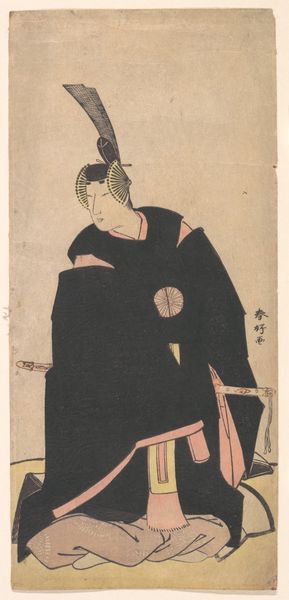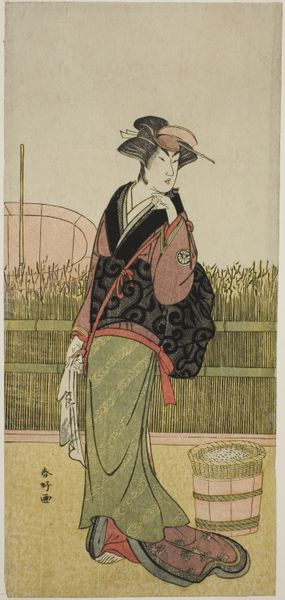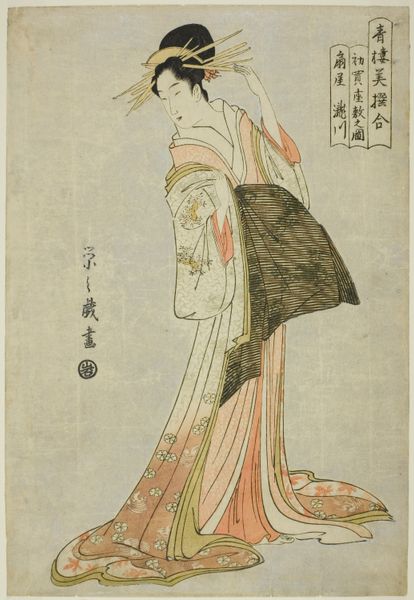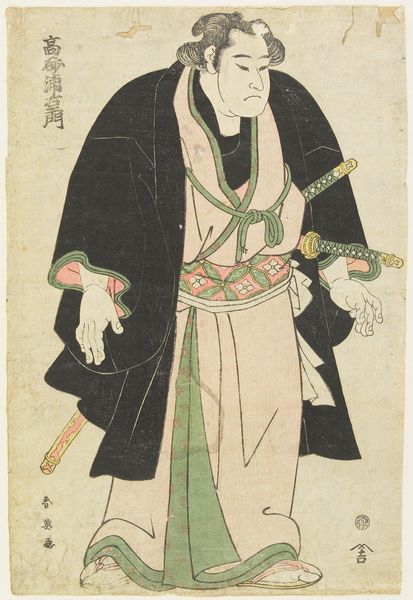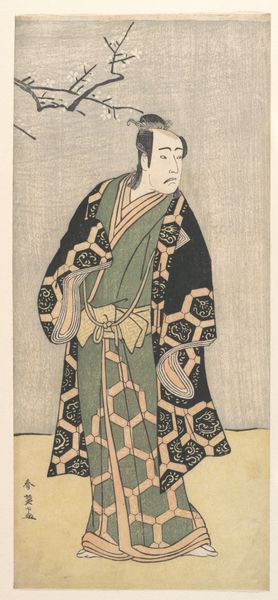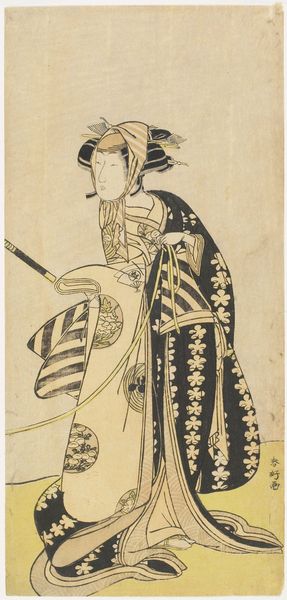
The Actor Segawa Kikunojo III as Kumenosuke in the Play Keisei Natori Soga, Performed at the Kiri Theater in the Second Month, 1788 c. 1788
0:00
0:00
print, woodcut
# print
#
asian-art
#
ukiyo-e
#
woodcut
Dimensions: 33 × 14.8 cm (13 × 5 13/16 in.)
Copyright: Public Domain
Editor: Here we have "The Actor Segawa Kikunojo III as Kumenosuke," a woodcut print from around 1788 by Katsukawa Shunkō. I'm really drawn to the textures and patterns in the actor’s robe, and the contrast between the solid figure and the wispy cherry blossoms. What strikes you most about this piece? Curator: What’s fascinating is how this print, through its materials and method of production, served as a crucial form of mass media. Woodblock printing allowed for relatively inexpensive reproduction, making these images accessible to a wider audience and solidifying the celebrity of Kabuki actors like Segawa Kikunojo III. Consider the labor involved in creating the woodblocks themselves; different artisans were responsible for carving the blocks for each color. Editor: That's interesting. So it's not just the final image, but the whole industry around it that gives it meaning? Curator: Exactly. Think about the paper: where did it come from? What fibers were used? Each of these decisions shapes the final product and connects the image to a broader network of material production and consumption. The actor's fame also influences value. Were it a different actor or play, the market forces would greatly alter how, and if, this print was made at all. Editor: I never thought about the individual processes contributing so much to the value of this one piece! Curator: The interplay between materials, labor, and market demand defines its significance. What did you learn new about the work that resonates with you? Editor: Definitely thinking about the prints as part of a bigger production system instead of isolated works of art! Thank you!
Comments
No comments
Be the first to comment and join the conversation on the ultimate creative platform.
